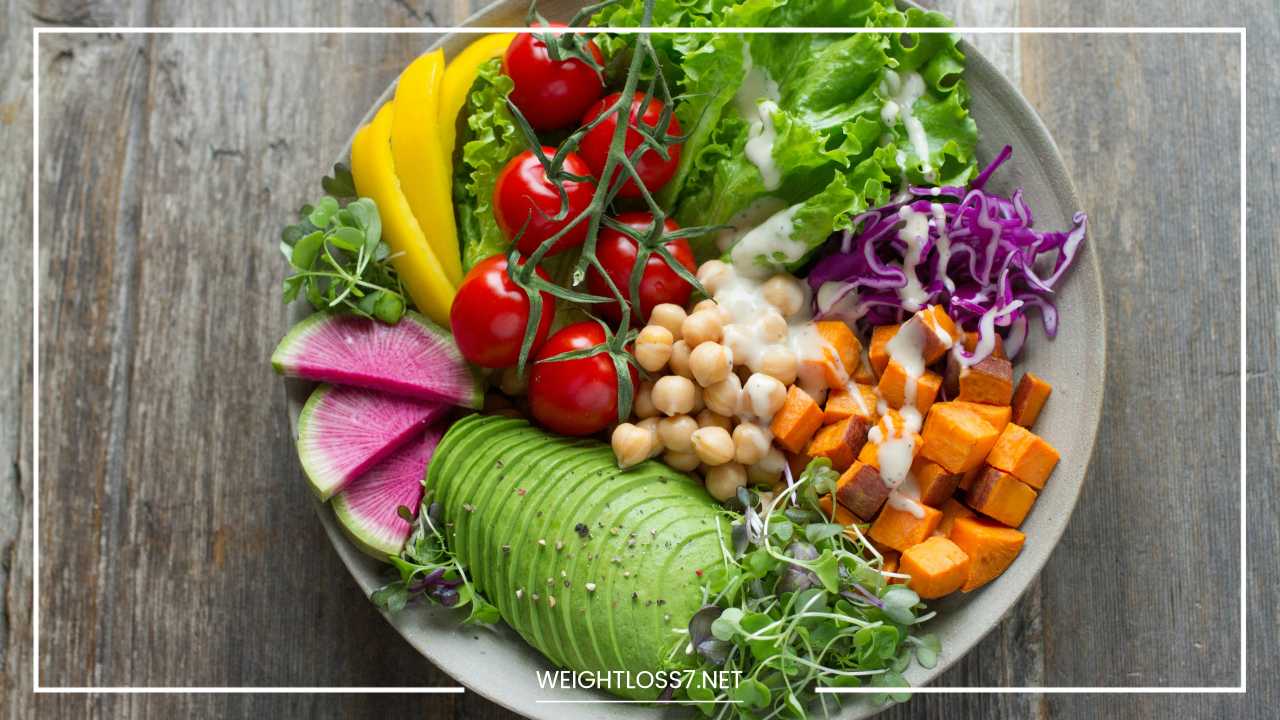Effective Weight Loss Tips for a Healthier You

Weight Loss Tips
Weight Loss Tips: A Sustainable Guide for a Healthier You
Shedding pounds can feel like an uphill battle. Conflicting information, fad diets, and unrealistic expectations can leave you feeling discouraged. But it is possible to reach your weight loss goals in a healthy and sustainable way!
This comprehensive guide will equip you with practical tips to jumpstart your weight loss journey and develop habits that will last a lifetime.
Reframe Your Perspective: Health First, Weight Loss Second
Weight loss is often seen as an aesthetic pursuit, but it’s much more than that. Shedding extra pounds can significantly improve your overall health, reducing your risk of chronic diseases like heart disease, type 2 diabetes, and some cancers.
Instead of solely focusing on the number on the scale, celebrate non-scale victories. Notice how you have more energy to chase after your kids, complete that household chore you’ve been putting off, or finally conquer that challenging hike you’ve been eyeing.
Track your progress in a journal, noting how your clothes fit better, you can move with greater ease, and your sleep quality has improved. This holistic approach will keep you motivated in the long run and help you develop a sustainable relationship with food and exercise.
Dietary Tweaks for Long-Term Success
Here are some practical dietary tips to incorporate into your daily routine for sustained weight loss:
-
Make Fruits, Vegetables, and Whole Grains the Stars of Your Plate: Fill at least half your plate with vibrant fruits and vegetables. They are low in calories, high in fiber, and packed with essential vitamins, minerals, and antioxidants. Fiber keeps you feeling full longer, preventing overeating. Pair your colorful produce with whole grains like brown rice, quinoa, or whole-wheat bread for a satisfying and balanced meal.
-
Choose Lean Protein Sources Wisely: Protein helps you feel full and reduces cravings throughout the day. Opt for lean protein sources like grilled chicken, fish, beans, lentils, or tofu. Limit processed meats like sausages and bacon, which are often high in unhealthy fats, sodium, and nitrates that can contribute to health problems.
-
Healthy Fats are Your Friends, But Choose Wisely: Don’t fear all fats! Healthy fats found in avocados, nuts, seeds, and olive oil can keep you feeling satiated, promote heart health, and aid in nutrient absorption. Enjoy them in moderation, however, as they are still calorie-dense. Aim for a healthy balance of monounsaturated and polyunsaturated fats, while limiting saturated and trans fats.
-
Be Mindful of Sugary Drinks: A Hidden Culprit: Sugary drinks like sodas, juices, sweetened coffees, and sports drinks are loaded with empty calories and can contribute to weight gain and chronic health problems. Swap them for water, unsweetened tea, or black coffee. You’ll be surprised at how much better you feel when you ditch the sugary beverages. Infuse your water with fruits, herbs, or vegetables for a natural flavor boost.
-
Portion Control is Key: Manage What Goes on Your Plate: It’s easy to overeat, even healthy foods. Use smaller plates, which can trick your brain into feeling satisfied with less food. Measure your portions using measuring cups or spoons, especially for calorie-dense foods like nuts, seeds, and dried fruit. Avoid distractions while eating. Savor your food and pay attention to your body’s hunger cues. Stop eating when you’re comfortably full, not stuffed.
-
Read Food Labels Like a Detective: Get familiar with food labels. Pay attention to serving sizes, calories, sugar content (including added sugars), and fat content (including saturated and trans fats). Look for foods that are high in fiber and protein and low in sodium. Be wary of “healthy-sounding” products that may be loaded with hidden sugars, unhealthy fats, or excessive sodium.
-
Plan and Prep for Success: Planning your meals and prepping healthy snacks in advance can be a game-changer. This way, you’ll have healthy options readily available when hunger strikes, preventing you from reaching for unhealthy convenience foods. Plan your meals around seasonal ingredients, which are often more affordable and flavorful. Batch cook on weekends to save time during the week. Pre-chop vegetables for easy snacking or to add to quick meals.
Embrace Movement: Exercise is Key
Regular physical activity is crucial for weight loss and overall well-being. Here’s how to get moving and make exercise a sustainable part of your life:
- Find an Activity You Enjoy: Make Fitness Fun!: Don’t force yourself to do exercises you hate. There are endless possibilities! Explore brisk walking, running, dancing, swimming, biking, yoga, Pilates, team sports, rock climbing, hiking, or anything that gets you moving and your heart rate up. Find something you genuinely enjoy, and you will be more likely to stick with it in the long run. Consider activities you can do outdoors to soak up some nature, which can further enhance your mood and well-being.
-
Start Slowly and Gradually Increase Intensity and Duration: Don’t go from couch potato to gym rat overnight. Begin with manageable workouts, like 20-30 minutes of moderate-intensity exercise 3 times a week. Gradually increase the duration and intensity of your workouts as your fitness level improves. You can add 5-10 minutes to your workouts each week or bump up the intensity by increasing the incline on the treadmill, adding weights to your exercises, or trying a more challenging class.
-
Aim for At Least 150 Minutes of Moderate-Intensity Exercise Weekly: The Centers for Disease Control and Prevention (CDC) recommends at least 150 minutes of moderate-intensity exercise or 75 minutes of vigorous-intensity exercise per week. Break it down into smaller chunks if needed. Even short bursts of activity throughout the day add up. Take the stairs instead of the elevator, park farther away from your destination, or do some bodyweight exercises during commercial breaks while watching TV.
-
Strength Training Matters: Build Muscle for a Boosted Metabolism: Don’t neglect strength training. Building muscle mass boosts your metabolism, helping you burn more calories even at rest. Include strength training exercises that target all major muscle groups at least 2-3 times per week. You can use bodyweight exercises, free weights, resistance bands, or weight machines. Aim for 8-12 repetitions per set, with 2-3 sets per exercise.
-
Find a Workout Buddy or Join a Fitness Class: Having a workout buddy or joining a fitness class can add a layer of accountability and enjoyment to your exercise routine. Knowing someone is counting on you to show up can be a great motivator. Plus, the social interaction and camaraderie can make exercise more fun.
Develop a Sustainable Mindset for Lasting Change
Weight loss is a journey, not a destination. Here are some tips to cultivate a healthy mindset that will support your long-term goals:
-
Set Realistic Goals: Celebrate Small Victories: Aim for gradual, sustainable weight loss. A healthy goal is to lose 1-2 pounds per week. Setting unrealistic goals like losing 10 pounds in a month can lead to frustration and discouragement. Celebrate your achievements, big and small. Losing even a few pounds can make a big difference in your health and well-being.
-
Focus on Progress, Not Perfection: There will be setbacks along the way. Don’t let them derail your progress. Everyone has occasional slip-ups. View them as learning experiences and get back on track with the next meal or workout. Forgive yourself, move forward, and recommit to your goals.
-
Find Your Support System: Surround Yourself with Positivity: Surround yourself with positive and supportive people who encourage your healthy habits. Tell your friends and family about your goals and ask for their support. Consider joining a weight loss support group or online community to connect with others who are on a similar journey.
-
Practice Self-Compassion: Be Kind to Yourself: Be kind to yourself throughout this process. Weight loss can be challenging, so be patient with yourself. Celebrate your achievements, no matter how small. Don’t beat yourself up over occasional indulgences.
Beyond the Scale: Additional Strategies for Success
-
Get Enough Sleep: When you’re sleep-deprived, your body produces more ghrelin, the hunger hormone, and less leptin, the satiety hormone. This can lead to increased cravings and overeating. Aim for 7-8 hours of quality sleep each night.
-
Manage Stress: Chronic stress can lead to unhealthy coping mechanisms, like emotional eating. Find healthy ways to manage stress, such as yoga, meditation, deep breathing exercises, spending time in nature, or spending time with loved ones.
-
Address Underlying Medical Conditions: Certain medical conditions, such as hypothyroidism or polycystic ovary syndrome (PCOS), can make weight loss more challenging. Talk to your doctor if you suspect an underlying condition may be contributing to your weight struggles.
-
Consider Talking to a Registered Dietitian: A registered dietitian (RD) can create a personalized meal plan to help you reach your weight loss goals in a healthy and sustainable way. They can also provide guidance on portion control, healthy eating habits, and mindful eating practices.
Remember, weight loss is a journey, and there will be ups and downs along the way. By incorporating these tips into your lifestyle, you can develop healthy habits that will support you in reaching your goals and creating a healthier, happier you.

















